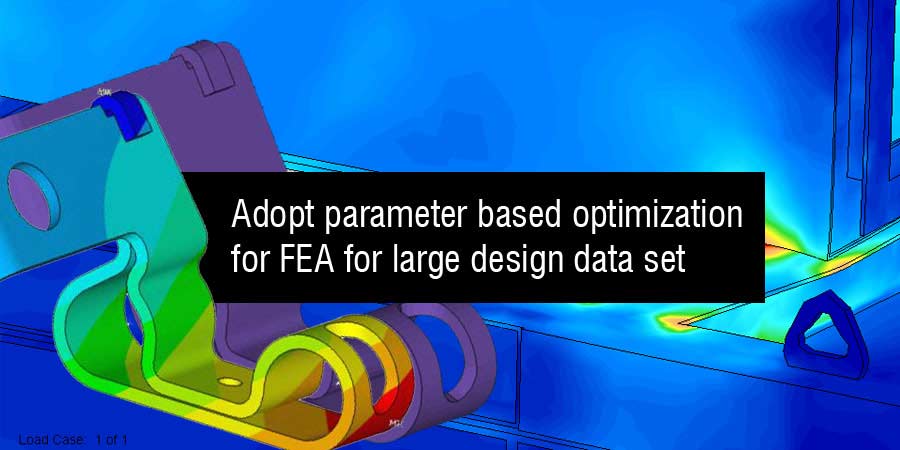Adopt Parameter based Optimization for FEA for Large Design Data Set
Posted by Rohan Belhe on February 3rd, 2017

When it comes to design optimization, it’s been long since designer have migrated to a software platform for performing design tests on the virtual prototype through simulations and study the behavior. As a result, today, the professionals indulge in several optimization techniques based on the designs, product, platform compatible for the virtual model, and the designed component.
Amongst all, parametric based optimization has its roots back to when automation was developed for generic 3D CAD models; and the most competitive designers today leverage it for making the best designs with multiple design value sets for developing complex designs. It allows developing and working in a flexible system based on parametric optimization, as it uses the drivers from initial design that are built up in parameter which can easily be modified later on.
Iterative optimization VS Parameter based optimization
Traditional practices involved checking and testing the designs for the behavior in real world situations through FEA – Finite Element Analysis software. Once the designs have been tested and upon analysis of results, the designer may again resort to same procedure by changing some of the critical parameters to land on the best design. It essentially involved multiple iterations for analysis with various design inputs, before finalization of designs.
In contrast to this, parameter based optimization is the automated traditional approach, and trial and error for design validation is done automatically by the software. The concept of dealing with multiple iterations is removed since that is handled by software. Such an automated approach allows developing highly complex designs and validating it with reduced time.
What does parameter based optimization deliver?
While dealing with large design data sets, working with traditional approach of design input parameters and studying the optimization results for each is an impractical and time consuming task. Also, while dealing with large sets of design parameters as inputs, the designers often get confused in selecting the best solution from numerous possibilities. This is exactly where parameter based optimization stands out in assisting the designer.
Several advanced techniques such as approximations, Design for Six Sigma (DFSS), and Designs of Experiments (DOE) that comes with parameter-based optimization, sets the wider scope of designing and exploration. Another excellent feature of parameter based design is that it allows the designer to view designs from multiple viewpoints, an essential in taking critical decisions with rising design complexity. This empowers the designer to understand and assess the analysis results to have design trade-offs insights and relationships.
Parameter based optimization software are also equipped with standalone optimization tools, delivering non-linear FEA results for customized parts. Such tools can easily be clubbed with commercially available FEA software like ANSYS, SIMULIA Abaqus etc. to harness their best outcomes without interoperability issues. Parameter based optimization goes to the lengths of including material properties with accurate geometric details in order to deliver exact end results that replicate real world conditions. On the other hand, most widely used parameter based optimization integrated with 3D CAD models, allows a simple solution and is limited to lesser complexity of design data for FEA.
To start optimizing the designs, all which is required is to have the proper knowledge and understanding of end goals, desired functional and safety performance of the product and intended application of the part in real world situations. Employing proper technique of optimization is of vital importance when there is a large data set for design inputs and variations. Automated design parameter based optimization comes in for the best possible assistance to the designer when dealing with multiple complex design options.


